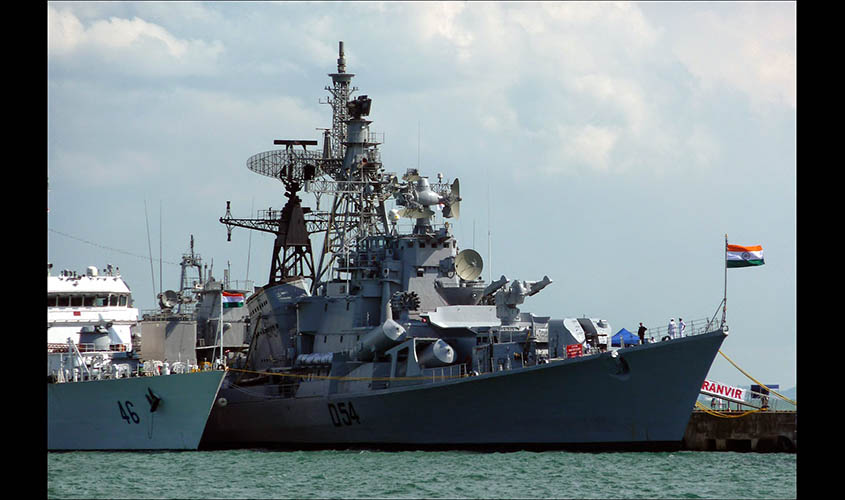Although Henry Kissinger took for himself in his imaginings of history the credit for the 1970s diplomatic breakthrough between the United States and China, the fact is that he had been dismissive of the prospects for such an understanding until ordered to go to Beijing by President Richard Nixon in 1971. From the time he was elected to office in 1969, Nixon had sought to reach out to Mao Zedong, and finally succeeded in getting a response towards the close of 1970. If there were any “China experts” in the US who thought that Nixon and Mao were capable of forging a friendship, they kept that view a secret, except perhaps to their spouses. The Chinese leader had cold-bloodedly ensured the establishing of a Greater China through incorporation of Manchuria, Inner Mongolia, Xinjiang and Tibet into the PRC within a few years of coming to power. Mao was an original “China Firster” (the way Xi Jinping is), and understood that his country would not be able to geopolitically hobble the USSR on its own. Also, that the only possible partner with the potential for engineering such an outcome was the US. Hence his grasping of the diplomatic hand proffered by Nixon. Together, the two countries fashioned a security alliance that sharply reduced Moscow’s diplomatic space, thereby boosting the capabilities of the US at a time when the country had suffered a military defeat in Vietnam. The de facto alliance between China and the US outlasted Nixon, and was continued by his successors because of its utility.
Success in geopolitical rankings hinges on a factual assessment of strengths and weaknesses, not the romantic calculus of Jawaharlal Nehru, who mistook dreams for reality and thereby forsook several advantages for India. Even some “hawks” in the Lutyens Zone base their policy prescriptions on the fantasy that India, with its $2 trillion economy, has on its own the capability of establishing by itself primacy in the Indian Ocean. Certainly the Indian Ocean Rim (IOR) is the zone over which India has to aim for numero uno status, and not just when dealing with those states that comprise its South Asia partners. Clearly, given its embrace of Pakistan, China will not step forward as India’s superpower partner in the quest to ensure that the IOR be a zone where India has as much influence as was the case until 1947. That leaves the US, whose geopolitical objectives would be served were a friendly power that is congruent with its values and security to get an upper hand throughout the IOR over regional threats and challengers. Both George W. Bush and Barack Obama understood this, but neither could succeed in ensuring a partnership with the depth and scope mandated by the imperatives of US-India security. Were Donald Trump and Narendra Modi to craft a relationship that would, in several particulars, replicate the breakthrough in ties between Beijing and Washington that took place nearly a half-century ago, they would create history, and in the process, keep the Indian Ocean Rim safe. An adequate defence and security understanding with the US would better enable India to ensure that no other country would be able to do anything that would detract from the keystone role played by India within the IOR.
China can make a significant contribution to economic growth in India, including through the Belt & Road Initiative (BRI), and hence, there is no question but that Delhi and Beijing need to work much closer together on such matters than has been the case. Simultaneously, however, a defence and security relationship needs to get established with the US that would parallel the tectonic shift which took effect from 1971, as a consequence of the Nixon-Mao understanding. For this, there needs to be a fashioning of Indian policy that is based on existing realities rather than imagined strengths. A holistic India-US understanding needs to be worked out, and this could happen as a result of a coming together of strategies between Trump and Modi. In the same way, substantial forward movement in Sino-Indian relations will need to be both initiated and concluded at the leadership level, i. e. between Xi and Modi, rather than through the bureaucracy, as has too often been the case thus far. Signing of the other two Foundation Agreements with the US (CISMOA and BECA) are desirable. An impression has been created that such a signing would take away discretion from Delhi, but this is false, as any reading of the agreements would show. What should be operationalised early is a US-India “Over the Horizon” radar array based at the tip of our peninsula that would be similar to what is already functioning in Jindalee, Australia. Such an array would enable much better real time information on activities taking place in the IOR, thereby ensuring appropriate responses in the event that threats bubble up to danger level. Later, Washington and Delhi should examine the feasibility of setting up an anti-missile system in India that would better secure the world’s most populous democracy from nuclear-related threats. Whether in the development of nuclear submarine technology or in the expansion of our Air Force and Navy, closer collaboration between the US and India would be helpful.
Neither India nor the US can ensure foolproof security in the IOR by itself. Moscow should of course remain a friend of Delhi. Under no circumstances should India sacrifice its longstanding friendship with Russia, or indeed countries such as Iran, as a condition of fullscope defence and security ties with the US. Washington and Delhi instead need to cooperate on meeting the threats and challenges that are common to both, which by itself forms a substantial list. The time is overdue for the US administration to “do a China”, this time with India, and for this country to adopt policies that are based on the realism of Mao, rather than the emotionalism of Nehru.

